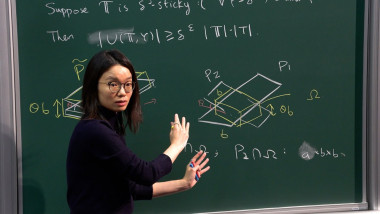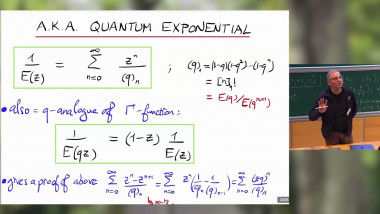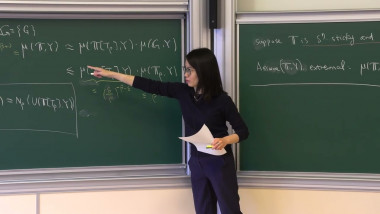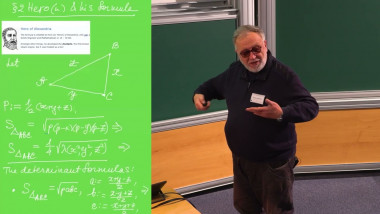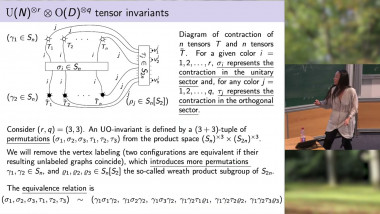Toeplitz determinants, Painlevé equations, and special functions. Part II: a Riemann-Hilbert point of view - Lecture 3
Appears in collections : Jean-Morlet chair - Research school: Coulomb gas, integrability and Painlevé equations / Chaire Jean-Morlet - École de recherche : Gaz de Coulomb, intégrabilité et équations de Painlevé, Ecoles de recherche
Starting with Onsager's celebrated solution of the two-dimensional Ising model in the 1940's, Toeplitz determinants have been one of the principal analytic tools in modern mathematical physics; specifically, in the theory of exactly solvable statistical mechanics and quantum field models. Simultaneously, the theory of Toeplitz determinants is a very beautiful area of analysis representing an unusual combinations of profound general operator concepts with the highly nontrivial concrete formulae. The area has been thriving since the classical works of Szegö Fisher and Hartwig and Widom, and it very much continues to do so.
In the 90s, it has been realized that the theory of Toeplitz and Hankel determinants can be also embedded in the Riemann-Hilbert formalism of integrable systems. The new Riemann-Hilbert techniques proved very efficient in solving some of the long-standing problems in the area. Among them are the Basor-Tracy conjecture concerning the asymptotics of Toeplitz determinants with the most general Fisher-Hartwig type symbols and the double scaling asymptotics describing the transition behavior of Toeplitz determinants whose symbols change from smooth, Szegö to singular Fisher-Hartwig types. An important feature of these transition asymptotics is that they are described in terms of the classical Painlevè transcendents. The later are playing an increasingly important role in modern mathematics. Indeed, very often, the Painlevé functions are called now ``special functions of 21st century''.
In this mini course, the essence of the Riemann-Hilbert method in the theory of Topelitz determinants will be presented. The focus will be on the use of the method to obtain the Painlevé type description of the transition asymptotics of Toeplitz determinants. The Riemann-Hilbert view on the Painlevé function will be also explained.











